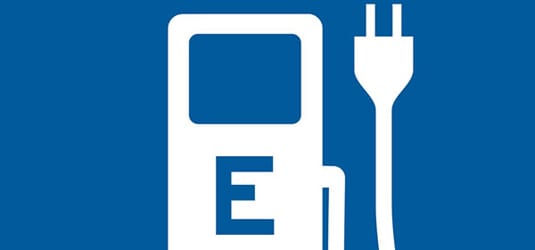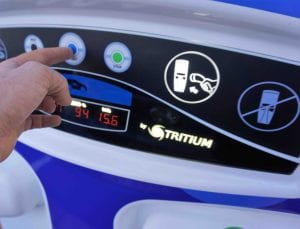The reuse of batteries originally built for electric cars can offer up to 1000 GWh storage capacity worldwide by 2030, while driving further cost decline for solar and storage technologies.

Wikimedia/U.S. Department of Transportation.
About 50% of batteries installed in electric cars are recycled after 5 to 7 years, when they still have about 80% of their original capacity. A study presented today at the German Renewable Energy Federation (BEE) in Berlin shows that, instead of recycling, old EV batteries can be successfully reused by both households and utilities.
“Germany is planning to put 1 million electric cars on the road by 2020. So, if we consider the battery size to be 40 kWh in average, a secondary life rate of 80%, and a battery upgrade after 7 years, a million cars means 25 GWh of “second-life” storage capacity for the country,” explained Gerard Reid from Alexa Capital, the author of the study, at the presentation at BEE.
Using Bloomberg Finance EV sales forecast, the study calculates that in 2030, when the number of electric vehicles sold worldwide is expected to reach 88 million, the cumulative installed capacity of secondary batteries will increase up to 1000 GWh.
The number of batteries available for second usage will increase with the number of cars, and, since EV manufacturers are constantly aiming to upgrade their products, possible results might be even more impressive, the study suggests. Today, the latest generation of EV batteries already has 20-30% greater capacity than those of 5 years ago.
Old but gold
The study presented by BEE today assumes that “second-life” EV batteries can be used for 10-15 years before being recycled. However, considering, that a battery has already been used in an electric car for 7 years, what are the chances that its capacity will not decline dramatically for another 10-15 years?
These chances are rather high, says Thomas Raffeiner, CEO of The Mobility House. An electric car battery has to endure adverse circumstances of high and cold temperatures, also, owners usually discharge and charge their cars very fast, which is stressful for a battery. On the other hand, when being used in a less stressful environment, even a “second-life” battery can last long.
The Mobility House is a German organization formed to support auto manufacturers in more than 20 countries. In November last year, it started a “second use” project developed in a partnership with automaker Daimler and Getec Energie. The project includes what is claimed to be the world’s largest re-use of EV batteries, a 13 MWh system installed at a recycling facility in Lünen, Germany.
Source: PV Magazine. Reproduced with permission.










